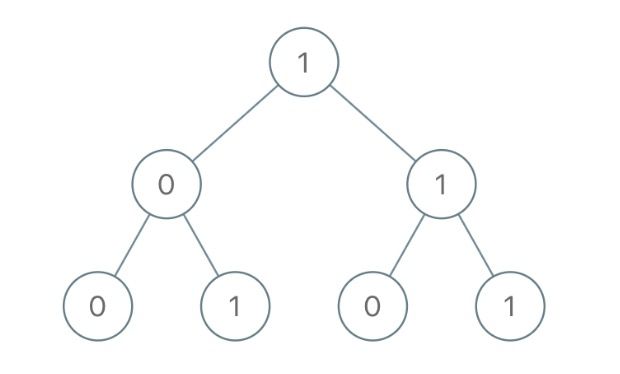|
|
马上注册,结交更多好友,享用更多功能^_^
您需要 登录 才可以下载或查看,没有账号?立即注册
x
- Given a binary tree, each node has value 0 or 1. Each root-to-leaf path represents a binary number starting with the most significant bit. For example, if the path is 0 -> 1 -> 1 -> 0 -> 1, then this could represent 01101 in binary, which is 13.
- For all leaves in the tree, consider the numbers represented by the path from the root to that leaf.
- Return the sum of these numbers.
-
- Example 1:
-

- Input: [1,0,1,0,1,0,1]
- Output: 22
- Explanation: (100) + (101) + (110) + (111) = 4 + 5 + 6 + 7 = 22
-
- Note:
- The number of nodes in the tree is between 1 and 1000.
- node.val is 0 or 1.
- The answer will not exceed 2^31 - 1.
- /**
- * Definition for a binary tree node.
- * public class TreeNode {
- * int val;
- * TreeNode left;
- * TreeNode right;
- * TreeNode(int x) { val = x; }
- * }
- */
- class Solution {
- public int sumRootToLeaf(TreeNode root) {
- return dfs(root,0);
- }
-
- public int dfs(TreeNode root, int val){
- if(root == null) return 0;
-
- val = val* 2 + root.val;
-
- if(root.left == null && root.right == null){
- return val;
- }
-
- return dfs(root.left, val) + dfs(root.right, val);
-
- }
-
- }
|
|
 ( 粤ICP备18085999号-1 | 粤公网安备 44051102000585号)
( 粤ICP备18085999号-1 | 粤公网安备 44051102000585号)